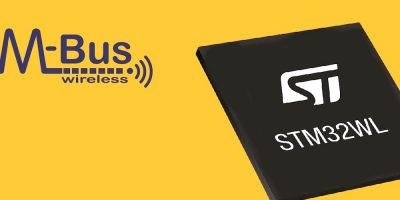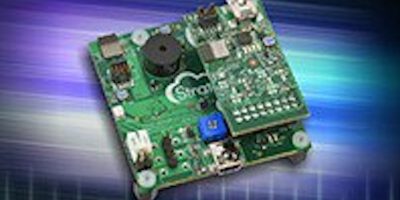A wireless M-Bus (wM-Bus) software stack leverages the integrated sub-GHz radio and multiple modulation schemes supported by STMicroelectronics’ STM32WL microcontrollers in smart metering systems.
According to ST it reduces the bill of materials costs for smart metering. The wM-Bus stack has been developed by Stackforce to comply with most of EN 13757-3/-7, covering the upper layers of the Wireless M-Bus protocol stack, as well as the lower layers (EN 13757-4) and its wM-Bus modes S, T, and C used throughout Europe in the 868MHz band. The mode N for operation at 169MHz is also an option. Other metering standards, including the most common Open Metering System (OMS) specification, as well as more specific standards like Dutch Smart Meter Requirements (DSMR) or CIG Italian Gas Committee specifications, are also met, adds ST.
Hakim Jaafar, marketing manager, STM32 Wireless products at STMicroelectronics said: “Thanks to our collaboration with Stackforce, STM32WL is reaching a new level of multi-protocol compatibility. With this wireless wM-Bus stack, the STM32WL can become the key product for a wide range of smart metering applications such as electricity, gas and water metering”.
Supported by the STM32 development ecosystem, STM32WL microcontrollers are low power devices incorporate a sub-GHz radio with a wide linear frequency range, dual power output. It can satisfy EN 300 220, FCC CFR 47 Part 15, ARIB T108, and other radio-equipment regulations, including China regulatory requirements. It also has an integrated switched-mode power supply (SMPS) and hardware cryptographic accelerators.
STM32WL devices with up to 256kbyte flash and a BGA73 package are in production now and are supported by ST’s 10-year product-longevity commitment
David Rahusen, managing director at Stackforce, said: “We will shortly add a wM-Bus over LoRaWAN stack that utilises . . . STM32WL features to merge the benefits of wM-Bus for seamless integration into metering infrastructure with the long-range capability of LoRaWAN urgently needed for metering applications”.
The Stackforce wM-Bus stack is available immediately. The wM-Bus over LoRaWAN stack will be available at the end of July 2020.







